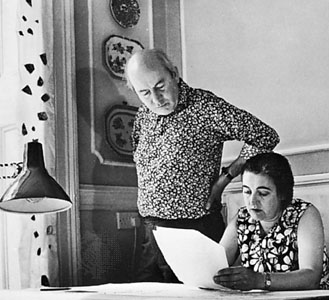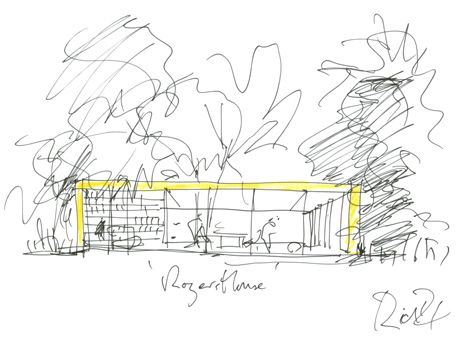Continuing my occasional series about people and things that inspire me as a designer, here is a brief video about two of my favorite architects, Alison + Peter Smithson. The Smithsons were remarkable and influential architects, teachers, and thinkers in the UK, active from the late 1940’s until their deaths in 1993 and 2003, respectively.
This video was produced by The Economist, the UK based news and business magazine, which has been operating out of a central London building designed by the Smithsons in the 1960s. The Economist complex of buildings was, and remains, iconic in architectural circles because of what it accomplished: inserting a complex of Modern buildings almost seamlessly into the fabric of a traditional city.
The two most striking ways they did this was through the massing of the buildings: putting the tallest structure in the middle of the block, away from the street, and clipping the corners to make the buildings look less imposing. The building on the street was the same height as the adjacent buildings.
They also understood scale. The articulation of their buildings has the same proportions and scale, though in a different “architectural language”, as the adjacent buildings. The direct neighboring building is the home of a very old and prestigious men’s club known as Boodles. They worked with the club to add a bay window to the club building using the architectural language of the new Economist structures.
Brutal vision: the story of Economist Plaza
The story behind the iconic building The Economist will soon leave
Posted by The Economist on Monday, April 3, 2017
The video is less than 5 minutes. Give it a look.
I could go on and on about these structures. The mid-height building is an apartment building and the units are highly prized and rarely come up for sale. (I know, I’ve checked.)
My Master’s thesis was about the Smithsons. I wrote about the relationship between their written essays about architecture and their buildings. They only completed 13 projects in their careers. But each was a significant moment in UK architecture. Some of their buildings have already been either torn down, or altered beyond recognition. The complex received “Grade II” listed status (the UK equivalent of being declared an historical landmark), and is therefore protected from major alterations. It won’t be treated with kid gloves, or as a museum piece, but any future alterations will have to be consistent with the architectural expression of the existing structure.





